Results 7,611 to 7,620 of 12096
Thread: Anandtech News
-
12-06-17, 10:07 AM #7611
Anandtech: Dell EMC Launches PowerEdge XR2 Rugged Server: 1U, 44 Cores, 512 GB RAM, 3
Dell EMC on Tuesday introduced its new-generation rugged PowerEdge XR servers, designed to work in harsh environments of industrial sites or even conflict zones. The new machines are equipped with Intel’s latest Xeon Scalable (Skylake-SP) processors along with up to 512 GB DDR4 memory and up to 30 TB of solid-state storage. In addition, the new PowerEdge XR2 features a special common access card that provides an additional way of authentication to drive data encryption and can instantly render the machines useless to the enemy once removed.
As computing becomes pervasive, servers get needed everywhere, including severe environments, such as industrial sites, rural areas, conflict zones and others. Dell is among a few companies that offer ruggedized laptops, tablets, and other hardware, so the company was among the first to address such needs. Dell’s first-gen rugged servers were custom-built machines based on the company’s PowerEdge servers and were sold to select customers. Because of growing demand for such machines and because Dell realized that servers for harsh environments have to be designed for extreme conditions from scratch, the company introduced its first “official” rugged server called the PowerEdge R420xr back in 2014. Today, the company is launching its second-generation purpose-built rugged server (which really is the company’s third-gen rugged server platform) — the PowerEdge XR2.
Just like the predecessor, the Dell EMC PowerEdge XR2 comes in 1U 20” deep chassis that features shock and vibration resistance, optional dust filtration and uses components certified to work in low and high temperatures (from -5ºC to +55ºC) as well as altitudes of up to 15K feet* (think specialized DRAM modules, SSDs, other chips). Meanwhile, the new machine is completely different from the system launched over three years ago and brings huge performance improvements.
The PowerEdge XR2 is based on two Intel’s Xeon Gold (Skylake-SP) processors with up to 22 cores, 30 MB L3 cache and a 140 W TDP. Power consumption is a concern for ruggedized servers because of cooling, so Dell decided to stick to CPUs with a moderate TDP (after all, 44 cores is a lot). The primary CPU socket can be equipped with 10 DIMMs (4 channels at 2 DPC and 2 channels at 1 DPC), whereas the secondary CPU socket can support six DDR4 memory modules (6 channels at 1 DPC), for a potential 512 GB total DRAM per box (previously only 384 GB was supported by the R420xr). Such an unorthodox memory configuration may look a bit odd and physically Intel’s latest Xeon Scalable CPUs can support more memory, but for its rugged servers Dell intends to use certified DIMMs made for severe environments and their capacity is being limited to 32 GB per module today.
The new storage sub-system is something that Dell must be proud of: the PowerEdge XR2 supports eight hot-swappable SATA/SAS SSDs featuring a total capacity of up to 30 TB capacity (up from 6.4 TB on the previous-gen model). Optionally, Dell may equip the system with self-encrypting SSDs, but by default the machine will encrypt the drives itself and will require Dell’s common access card to access/decrypt them. Once such card is removed, the drives cannot be accessed by unauthorized personnel or enemy, which will come in handy in various conflict zones. Depending on the needs, the PowerEdge may be equipped with a variety of RAID controllers.
Two CPUs, multiple memory modules, and eight high-end SSDs consume a substantial amount of power. Dell equips the PowerEdge XR2 with a 550 W redundant PSU, which will feed the aforementioned components. Meanwhile, due to volume restrictions, TDP limits, and power constraints, the new machine will not support any accelerators, just like its predecessor. This may be a pity for oil and gas exploration applications many of which rely on NVIDIA’s Tesla accelerators, but typically oil and gas companies can afford to build custom hardware for their exploration needs.
Depending on exact configuration, the Dell PowerEdge XR2 machines can be equipped with 1Gb, 10Gb BASE-T, 10Gb SFP+, and 40Gb QSFP+ networking cards. The XR2 machines are IPMI compliant and can support Dell’s proprietary iDRAC9 remote management. As for operating systems, expect the machine to be compatible with Microsoft’s Windows Server as well as various Linux builds.
Dell EMC will sell its PowerEdge XR2 machines directly as well as through resellers and OEMs who may adapt them for particular needs by loading software and perform other customizations. OEMs can also install their own bezels and load BIOS with their logotypes and/or features.Dell PowerEdge XR2: General Specifications PowerEdge XR2 1U/20" CPU Two Intel Xeon SP processors
Up to 140 W TDP (each):
Intel Xeon Gold 6152
Intel Xeon Gold 6140
Intel Xeon Gold 6138
Intel Xeon Gold 6132
Intel Xeon Gold 6130
Intel Xeon Gold 6126
Intel Xeon Gold 5122
Intel Xeon Gold 5120
Intel Xeon Gold 5120T
Intel Xeon Gold 5118
Intel Xeon Silver 4116
Intel Xeon Silver 4114
Intel Xeon Silver 4112
Intel Xeon Silver 4110
Intel Xeon Silver 4108
Intel Xeon Bronze 3106
Intel Xeon Bronze 3104Chipset unknown RAM Up to 512 GB DDR4-2667 RDIMMs with ECC
CPU1: 10 DIMMs, 4 ch at 2 DPC, 2 ch at 1 DPC
CPU2: 6 DIMMs, 6 channels at 1 DPC
8 GB, 16 GB, 32 GB modules supportedStorage Controllers PERC H330
PERC H730p
PERC HBA330Storage 2.5" SATA/SAS: up to hotplug 8 drives, 30 TB capacity
M.2 SATA: 2 drives for fast boot, OS
Up to three drive form-factor storage devices.Expansion 2 × PCIe x16 for NICs Networking Integrated Broadcom 5720 2 x 1GbLOM
plus optional LOM Riser
LOM Riser Options:
Broadcom 5720 2×1Gb
Broadcom 57416 2×10Gb Base-T
Broadcom 57416 2×10Gb SFP+I/O Front ports:
- D-Sub, eSATA, USB 2.0,
- Dedicated iDRACDirect Micro-USB
Rear ports:
- D-Sub, RS232, 2×USB 3.0,
- Dedicated iDRAC network portEmbedded Management IPMI 2.0 compliant
iDRAC9 with Lifecycle Controller (Express, Enterprise)
Quick Sync 2 wireless module optionalSecurity TPM 1.2/2.0 optional
Cryptographically signed firmware
Secure Boot
System Lockdown
Secure Erase
Integrated Common Access Card ReaderHarsh Environment Testing MIL-STD-810G (temp, shock, vibration, altitude, sand/dust)
MIL-STD-461G for conductive/radiative immunity
DNV-GL for temperature, humidity, vibration, EMCPSU 550W redundant
Gallery: Dell PowerEdge XR2





*Formally, the machines are compliant with MIL-STD-810G and MIL-STD461G requirements for temperature, shock, vibration, altitude, and conductive/radiative immunity, as well as DNV, IEC 60945 requirements for maritime navigation and radiocommunication equipment when it comes to temperature, humidity, vibration, and EMC.
Related Reading- Dell Latitude 12 Updated: Rugged Tablet Gets Faster CPU, FHD LCD, Lower Weight, USB-C
- Dell Announces Updated Precision Workstation Lineup at SIGGRAPH: Refreshed Towers, Racks, and Laptop
- Intel Unveils the Xeon Scalable Processor Family: Skylake-SP in Bronze, Silver, Gold and Platinum
- Sizing Up Servers: Intel's Skylake-SP Xeon versus AMD's EPYC 7000 - The Server CPU Battle of the Decade?
More...
-
12-06-17, 05:08 PM #7612
Anandtech: Qualcomm Announces Snapdragon 845 Mobile Platform: Tocks Next-Gen CPU Core
Today as part of its media event, Qualcomm finally announced the much expected Snapdragon 845, successor to last year's very successful Snapdragon 835. The Snapdragon 845 is a large step in terms of SoC architectures as it's the first to employ ARM's DynamiQ CPU cluster organization. Quickly explained, DynamIQ enables the various different CPU cores within an SoC to be hosted within the same cluster and cache hierarchy, as opposed to having separate discrete clusters with no shared cache between them (with coherency instead happening over an interconnect such as ARM's CCI). This major transition is probably the largest to date that we've seen in modern mobile smartphone ARM consumer SoCs.
More...
-
12-07-17, 01:32 PM #7613
Anandtech: Lite-On Adds MU X SSD to Lineup: Phison PS5008-E8, 3D TLC, Up to 1600 MB/s
Phison has been sampling its entry-level PS5008-E8 NVMe SSD controller for well over a year now, and a number of its partners have demonstrated their drives featuring the chip, but no one has started to ship actual products thus far. As it appears, things are about to change as Lite-On has quietly added its new entry-level MU X PCIe 3.0 x2 SSDs based on Phison's controller to its lineup and promises to start selling them shortly. Interestingly, Lite-On will sell the MU X products in retail, which does not happen often with the brand.
Lite-On’s MU X M.2-2280 SSDs will be available in 128 GB and 256 GB configurations targeting inexpensive gaming PCs that need something faster than conventional SATA SSDs, but cannot afford more advanced PCIe 3.0 x4 drives. The Phison PS5008-E8 controller will work with Toshiba’s 256 Gb BiCS3 3D TLC NAND memory, which is gaining traction among SSD makers these days. Phison yet has to disclose all the details about its PS5008-E8, but what we do know is that the controller is compliant with the NVMe 1.2 specification, uses a PCIe 3.0 x2 interface, features four NAND channels, a DDR3/DDR3L DRAM buffer, Phison’s proprietary error correction algorithm called StrongECC, the company’s own RAID ECC algorithm to recover user data from uncorrectable errors, AES-256 encryption, and so on. The key selling point of the PS5008-E8 is not extreme performance, but affordability and reliability.
Indeed, the Lite-On MUX 256 GB offers up to 1600 MB/s sequential read speed as well as up to 850 MB/s sequential write speed (with pSLC enabled), which does not seem like a record-breaking performance, but which is in line with contemporary entry-level PCIe 3.0 x4 SSDs. When it comes to random performance, the MUX 256 GB is capable of 140K/145K random read/write IOPS, which is ahead of many PCIe 3.0 x4 drives. As for the 128 GB model, its write speed is speced at up to 1500 MB/s, but its read speed is 450 MB/s, which is comparable with modern SATA SSDs. As for reliability, Lite-On rates its MU X drives for 1.5 million hours MTBF and covers them with a three-year warranty.
Lite-On produces most of its drives for various PC and server OEMs, to address consumer markets, the company uses the Plextor brand. OEM orientation of Lite-On’s SSD business is a primary reason why the company uses SSD controllers from multiple developers (including Marvell, Silicon Motion, and Phison) — different clients have different requirements when it comes to performance and pricing. Some of Lite-On’s drives use in-house design, other are based on reference designs from respective developers of controllers. When it comes to the MU X, the drive uses a design developed by Phison, which has passed Lite-On’s quality checks.Lite-On MU X Specifications Capacity 128 GB 256 GB Model Number PP3-8D128 PP3-8D256 Controller Phison PS5008-E8 NAND Flash Toshiba's 256 Gb 64-layer BiCS3 3D TLC Form-Factor, Interface M.2-2280, PCIe 3.0 x2, NVMe 1.2 Sequential Read 1500 MB/s 1600 MB/s Sequential Write 450 MB/s 850 MB/s Random Read IOPS 91K IOPS 145K IOPS Random Write IOPS 110K IOPS 140K IOPS Pseudo-SLC Caching Supported DRAM Buffer Yes, capacity unknown TCG Opal Encryption Unknown Power Management Unknown Warranty 3 years MTBF 1,500,000 hours MSRP ? ?
Lite-On’s MU X drives will hit store shelves in the coming weeks. MSRPs of the drives are currently unknown, but since affordability is a key feature of the controller, expect the actual SSDs to be priced accordingly.
Buy Plextor M8Pe 256 GB SSD on Amazon.com
Related Reading:
- Patriot Preps Budget-Priced & Phison-Based Scorch NVMe SSD For Q3
- GALAX Shows Off Phison PS5008-E8 SSD with 3D NAND
- Lite-On Launches CA3 M.2 NVMe SSDs: Up to 1TB, 2.9 GB/s, Marvell 88SS1093
- Lite-On SSDs At FMS: New Controllers And TSV NAND Packaging
- Plextor Announces M9Pe SSD: 3.1 GB/s, Marvell Controller, 64-Layer 3D TLC, RGB LEDs The Plextor M8Pe (512GB) SSD Review
More...
-
12-07-17, 01:32 PM #7614
Anandtech: EVGA Releases GeForce GTX 1070 Ti FTW Ultra Silent: 3 Slot Bracket, ACX 3.
This week, EVGA launched another model for their GeForce GTX 1070 Ti family: the FTW Ultra Silent, featuring the ACX 3.0 cooling system. Starting from its triple slot wide PCIe bracket, the card has basically more of everything from the lower-end SC Black Edition: another 8 pin PCIe connector, 10+2 power phases, and 235W power draw. As a mix between the ACX 3.0 equipped SC Black Edition and iCX FTW2, the FTW Ultra Silent is a little over 17mm thicker than the SC Black Edition due to a heftier heatsink. In turn, that excess cooling capability permits the FTW Ultra Silent a shot at living up to its name, while also allowing for overclocking headroom.
Advertised at 1607+/1683+ MHz clockspeeds, EVGA is referring to their Precision XOC overclocking utility, as well as the Precision XOC 'OC Scanner X' feature, in light of the GTX 1070 Ti’s requirement to ship at reference clocks. The OC Scanner X functionality detects artifacting and tests the card for what it believes to be the “optimal” overclock, and then applies it; for gamers who are not comfortable with overclocking, automatic overclocking brings GTX 1070 Ti’s a step closer to actual factory overclocks. Though like with all automatic overclock features, manual tweaking is likely more precise and tuned for a given end-user.
Meanwhile, the FTW Ultra Silent picks up a couple more high-end board features with 2 BIOS chip and a backplate, though it misses out on the king of all premium graphics card attributes – RGB LEDs. The FTW Ultra Silent comes with a white LED logo like the rest of the EVGA GTX 1070 Ti family, while the FTW2 remains the only one with RGB LED capability.
The FTW Ultra Silent does share the $500 price with the FTW2, essentially at the price ceiling for GTX 1070 Ti, but trades off the FTW2 and iCX extras for a larger heatsink. And despite the wider three slot PCIe bracket in supporting that heatsink, the FTW Ultra Silent has the same display output configuration as the FTW2: 1 x DVI-D, 3x DisplayPort, & 1x HDMI (maximum 4 monitors supported). The FTW Ultra Silent also comes with the eponymous Ultra Silent fan profile, but details thereof were not specified.Selected EVGA GeForce GTX 1070 Ti Models EVGA GTX 1070 Ti FTW Ultra Silent EVGA GTX 1070 Ti FTW2 EVGA GTX 1070 Ti SC Black Edition Boost Clock 1607+ MHz Base Clock 1683+ MHz VRAM Clock / Type 8Gbps GDDR5 Capacity 8 GB Bus Width 256-bit TDP 235W 235W 217W Outputs 3x DP1.4, 1x HDMI2.0, 1x DVI-D Power Connectors 2 x 8pin 2 x 8pin 1 x 8pin Power Phases 10+2 10+2 5+1 Length 267mm 267mm 267mm Bracket Width 3 Slot 2 Slot 2 Slot Height 129mm 129mm 111.2mm Cooler Type Open Air (ACX 3.0) Open Air (iCX) Open Air (ACX 3.0) Price $499 $499 $469
At this time, the GTX 1070 Ti FTW Ultra Silent is only available at the EVGA store for $499.99, and appears to be in stock.
Buy EVGA GTX 1070 Ti FTW2 on Amazon.com
Buy EVGA GTX 1070Ti SC Hybrid on Amazon.com
Gallery: EVGA GTX 1070 Ti FTW Ultra Silent





More...
-
12-07-17, 03:59 PM #7615
Anandtech: Gigabyte Unveils Radeon RX Vega 64 Gaming OC Windforce 2X, To Release RX V
Adding on to the recent slew of custom RX Vega announcements, last week Gigabyte announced the Radeon RX Vega 64 Gaming OC 8G, featuring their dual-fan Windforce cooling system. The 2.5 slot width card comes with a very mild factory overclock of 1560MHz boost and 1276MHz base, but otherwise brings the usual amenities of high-end custom designs: 12+1 power phases, backplate with copper slug and heatpipe, and zero fanspeed idle under their “3D Active Fan” branding, where fans turn off under lower temperatures or loads.
The rest of the Windforce 2X design is fairly standard for Gigabyte’s high-end models. Underneath the two 100mm alternate spinning fans, the aluminum heatsink’s five copper heatpipes make direct contact with the GPU, and presumably the HBM2 as well. On the rear, the metal backplate features a copper plate behind the GPU and a copper heatpipe, features that are not typically present in Gigabyte’s budget models. Altogether, the heatsink with rear copper plate and heatpipe complex is an interesting design choice to complement the dual fan design, and ideally would mitigate the lesser cooling potential versus three fans.
The card also features a 3x HDMI & 3x DisplayPort output configuration, leaving it suitable for VR and 6-display setups. While the card has 2x 8pin PCIe power connectors, TBP was not disclosed, and the specifications simply recommend a 750W PSU.Specifications of Selected Radeon RX Vega 64 Cards Gigabyte Radeon RX Vega 64 Gaming OC Windforce AMD Radeon RX Vega 64 Air AMD Radeon RX Vega 64 Liquid Base Clock 1276Mhz 1247MHz 1406MHz Boost Clock 1560MHz 1546MHz 1677MHz VRAM Clock / Type 1.89Gbps HBM2 1.89Gbps HBM2 1.89Gbps HBM2 Capacity 8GB 8GB 8GB Bus Width 2048-bit 2048-bit 2048-bit Board Power TBA 345W 295W Dimensions 274 x 132 x 53 mm 272 x 112 x 40mm 272 x 112 x 40mm Power Connectors 2 x 8pin 2 x 8pin 2 x 8pin Outputs 3 x HDMI 2.0
3 x DP 1.41 x HDMI 2.0
3 x DP 1.41 x HDMI 2.0
3 x DP 1.4Process GloFo 14nm GloFo 14nm GloFo 14nm Launch Price TBA $699 (Liquid Pack) $499
While Gigabyte’s announcement states that they have released the product, the RX Vega 64 Gaming OC is yet to be found on sale. Gigabyte did comment that a custom Radeon RX Vega 56 featuring the same Windforce 2X cooler will be released in early December, presumably in time for the holiday season.
Gallery: Gigabyte Radeon RX Vega 64 Gaming OC Windforce 2X





Selected Upcoming Radeon RX Vega Custom Boards Card Clocks Availability ASUS RX Vega 64 ROG Strix OC 1405 MHz (Base)
1590 MHz (Boost)TBA ASUS RX Vega 56 ROG Strix OC 1156+ MHz (Base)
1471+ MHz (Boost)TBA GIGABYTE RX Vega 64 Gaming OC (Windforce 2X) 1278 MHz (Base)
1560 MHz (Boost)December GIGABYTE RX Vega 56 Gaming OC (Windforce 2X) 1156+ MHz (Base)
1471+ MHz (Boost)December PowerColor RX Vega 64 Red Devil 1417 MHz (Base)
1607 MHz (Boost)December PowerColor RX Vega 56 Red Devil 1156+ MHz (Base)
1526 MHz (Boost)December XFX Radeon RX Vega 64 Double Edition 1247 MHz (Base)
1546 MHz (Boost)December or later XFX Radeon RX Vega 56 Double Edition 1156 MHz (Base)
1471 MHz (Boost)December or later
More...
-
12-07-17, 06:11 PM #7616
Anandtech: EKWB Launches EK Fluid Gaming A240R Kit: Full-Cover Vega GPU Cooling & Sup
EKWB is launching a new liquid cooling kit designed to support AMD Radeon RX Vega based video cards, which the company is dubbing the EK Fluid Gaming A240R kit. The kit includes the EK-AC Radeon Vega full-cover block, the Supremacy AX CPU block, the Alustream SE 240 radiator, as well as the Vardar 120 series of fans. Though we have seen similar kits before from the Fluid gaming line, the EK-A240G, this is EK’s first kit engineered to support AMD Vega video cards and is an easier way to jump into custom liquid cooling without the hassle of finding all the parts needed.
The Fluid Gaming A240R kit’s star of the show is the EK-AC Radeon Vega full-cover water block. Designed with AMD, the water block directly cools the GPU, HBM2 memory, as well as the VRM with water flowing directly over those critical parts. The block itself is made out of aluminum while the outside is black and has the Radeon Vega name and symbol on it. Capping off its overall aesthetic is a matte black brushed aluminum backplate giving the whole thing a clean look. EK says the EK-AC Radeon Vega block will fit all reference Radeon Vega Front Edition, RX Vega 64, and RX Vega 56 graphics cards. As always, check the EK Cooling Configurator to ensure compatibility.
The kit also comes with the EK-Supremacy AC water block featuring a black brushed aluminum faceplate which should blend in with most other hardware, just as the EK-AC Radeon Vega block above. It is a universal water block that EK says fits all modern AMD and Intel CPUs. The cold-plate is made from die casted aluminum alloy and uses a micro-channel fin structure to get heat away from the CPU underneath. It comes with standard G 1/4” ports and comes with a pre-assembled tool-less mounting mechanism designed for easy installation.
The EK- Alustream SE 240 radiator is matte black in color matching the other parts in the kit and comes in at a slim 27.5mm thick. EKWB says it has dense aluminum fins and is optimized for maximum heat dissipation across the range of the included Vardar fans. Also included in the kit are all the fittings (EK compression fittings), tubing, and coolant (EK Cryofuel) to get started. Users do need to be aware there is aluminum in this loop and should take heed of this when expanding and introducing a mixed metal situation. EK does go over this HERE saying the purpose made coolant contains all the needed chemicals to protect the parts from corrosion and biological growth.
The EK Fluid Gaming A240R kit and EK-AC Radeon Vega full-cover water block are currently available for pre-order through the EK Fluid Gaming web-shop. Pre-orders will start shipping Friday, December 8th.
Related Reading:EKWB Fluid Gaming A240R Name MSRP (inc. VAT) EK Fluid Gaming A240R 249.95€ / $239.99 EK-AC Radeon Vega 89.95€ / $89.99 - Cooler Master Announces MasterLiquid ML120L RGB and ML240L RGB CLC: Lightning Up The Night
- EKWB Announces EK-MLC Phoenix AIO: MOdular and Expandable Liquid Cooling Family
- Enermax Launches LiqTech TRO AIO LCS for AMD's Threadripper: 100% IHS Coverage, 500W TDP
- The Fractal Design Celsius S24 & S36 AIO Coolers Review
- EKWB Releases 420mm and 560mm CoolStream Slim Radiators
- EKWB Unveils Threadripper Edition EK Supremacy EVO CPU Water Blocks
- EKWB Releases New Varder EVO Fan with Start-Stop Function
More...
-
12-07-17, 08:15 PM #7617
Anandtech: Toshiba Announces 14 TB PMR MG07ACA HDD: 9 Platters, Helium-Filled, 260 MB
Toshiba is announcing its first family of helium-filled hard drives today. It includes the industry’s first 14 TB HDD with nine platters featuring perpendicular magnetic recording (PMR) technology without shingled platters. The drives are primarily aimed at operators of cloud and exascale datacenters that need all the capacity they can get. It is a market segment that Toshiba has barely been able to address in the past. In addition, Toshiba also expects to sell its 12 TB and 14 TB HDDs through distributors once it ramps up production and satisfies the demand from key clients.
Toshiba’s First Helium-Filled HDD Platform
Toshiba is introducing its hermetically sealed helium-filled hard drives years after its rivals. However, the platform being used for the new MG07ACA HDDs is the most sophisticated in the industry today. It supports the most number of platters, features up to 18 heads, and also has the highest areal density. Toshiba’s flagship MGA070ACA 14 TB hard drive incorporates nine PMR platters with ~1.56 TB capacity each. By contrast, its competitors have eight 1.5 TB platters. In order to cram nine platters into an industry-standard 3.5” HDD, Toshiba had to use Showa Denko's new offerings that are 0.635 mm thick (down from the 0.8 mm platters in the previous generation drives), shrink the distance between the platters to 1.58 mm and use new heads from TDK featuring its 2nd generation dual-stage actuator. Toshiba does not say whether it uses 9th generation or 8th generation PMR media from Showa Denko for the new HDDs. However, knowledge of the areal density makes the actual formal generation unimportant. Meanwhile, Toshiba’s helium-filled hard drive platform also includes a new cover design with laser welding, Nidec’s motors for helium-filled HDDs, hermetic connectors and other necessary components.
Since the MG07ACA are intended for datacenter racks containing hundreds of vibrating hard drives, they feature numerous enhancements when it comes to reliability and durability. These include top and bottom attached motors, RVFF as well as environmental sensors and so on. Because the new drives shrink the distance between platters to 1.58 mm, it is important to handle vibration effectively. Toshiba rates the new HDDs for 550 TB average annualized workload, 2.5 million hours MTBF and covers them with a standard five-year warranty.
In addition, the new storage devices support Toshiba’s persistent write cache (PWC) with power loss protection (PLP). This is very important for 4K sector drives that emulate 512B sectors. The PWC with PLP feature guards data in case of power loss while performing read-modify-write (RMW) operation to align the source write request with the physical sectors it has to modify. The fact that Toshiba supports RMW in its latest nearline HDDs is important because the tech enables the company to address its clients who run legacy systems with rather extreme capacity points.
12 TB and 14 TB HDDs
Toshiba’s MG07ACA family of 3.5” enterprise-class HDDs will have two models - a 12 TB SKU, and a 14 TB SKU. The flagship 14 TB one uses nine platters with the highest areal density, whereas the 12 TB variant has eight. Both drives feature a 7200 RPM spindle speed, a 256 MB cache buffer, and a SATA 6 Gbps interface. Due to the increased areal density, the flagship drive is able to advertise a 260 MB/s maximum sustained transfer rate, whereas the 12 TB model is slightly slower at around 250 MB/s. Toshiba says the drives can perform up to 167 read IOPS, and, up to 70 write IOPS (4 KB blocks) when subject to random accesses.
Helium has 1/7th of air's density, and that reduces drag force acting on the spinning platters, while also lowering the fluid flow forces that affect the disks and the heads. This reduces the power consumption substantially, compared to Toshiba's previous-generation enterprise hard drives. The 14 TB variant does not exceed 7.6 W when performing read/write operations and drops to 4.6 W in idle. Operating power of Toshiba’s MG07ACA HDDs is in-line with Seagate’s helium-filled offerings, but is a bit higher when compared to helium HDDs from Western Digital/HGST. Meanwhile, the 4.6 W idle power consumption is the lowest among enterprise-grade high-capacity HDDs. In terms of power consumption efficiency at idle (large hard drives could spend plenty of time idling), the 14 TB MG07ACA is an indisputable champion consuming just 0.32 W per TB.
3360 TB Per RackBrief Specifications of Toshiba's MG07ACA HDDs Capacity 14 TB 12 TB P/N 4K Native MG07ACA14TE MG07ACA12TE 512e tbd tbd 512e SIE tbd tbd Platters 9 8 Heads 18 16 Recording Technology Perpendicular Magnetic Recording (PMR) / Conventional RPM 7200 RPM Interface SATA 6 Gbps DRAM Cache 256 MB Persistent Write Cache Yes Helium-Filling Yes Sequential Data Transfer Rate (host to/from drive) 260 MB/s ~250 MB/s MTBF 2.5 million Rated Annual Workload 550 TB Acoustics (Seek) 34 dBA Power Consumption Random read/write 7.6 W ? W Idle 4.6 W ? W Warranty 5 Years
Toshiba’s MG07ACA HDDs are designed for operators of cloud and exascale datacenters that demand maximum capacity. The new hard drives are drop-in compatible with existing datacenter infrastructure (because of PMR, SATA, and a relatively low power consumption) and can increase the total storage capacity for a single rack from 2440 TB to 3360 TB, when replacing 10 TB drives with 14 TB HDDs. An increase of storage capacity per rack (and per drive) by 40% can be a major benefit for companies that need to maximize their storage capacity per square meter and per watt, while meeting other TCO objectives.
The most important advantage of Toshiba’s 14 TB MG07ACA hard drive over HGST’s Ultrastar Hs14 is the usage of PMR technology without shingled platters (SMR). Toshiba indicated that many cloud and exascale datacenters are yet to invest in SMR management at the software level, and are unable to use SMR drives effectively. SMR drives have a number of peculiarities when it comes to writing, which have been discussed before.
Q2 Availability
Toshiba plans to start sample shipments of the MG07ACA hard drives in the coming weeks. Since we are dealing with HDDs aimed primarily at cloud datacenters, it will take operators several months to evaluate the storage devices and qualify them for their applications. Some of Toshiba’s clients have apparently tried engineering samples of the MG07ACA HDDs already. Toshiba plans to start volume B2B shipments of the drives three to four months after sampling, sometimes in Q1 or Q2 2018. After the company meets demand of its initial customers, the company will make the 12 TB and 14 TB products available through distributors, which essentially means that they are going to hit Amazon eventually. Pricing is not current available, but since the MG07ACA hard drives belong to the ultra-high-end segment, expect them to be priced accordingly.
What’s Next?
Toshiba has introduced its first helium-filled enterprise HDDs four years after HGST and 1.5 years after Seagate. The launch of the company’s eight-platter 10 TB MG06ACA HDD earlier this year clearly demonstrated that Toshiba extended use of traditional air-filled HDD technology to its maximum. While deserving respect, it also means that the company did not have competitive hard drives for nearline applications for years as its rivals put out helium-filled 8 TB and 10 TB drives in the market. But, with its 1st generation helium drive, the company is leapfrogging its competitors. So what’s next for Toshiba?
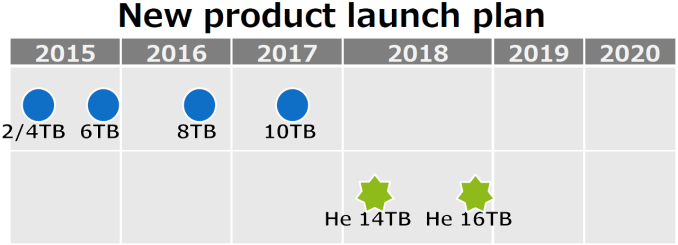
The nine-disk hermetically sealed platform has been in development for years and the 14 TB helium HDD entered Toshiba’s public roadmap in 2016. Along with the 14 TB model, the company included an even higher-capacity 16 TB helium HDD into the roadmap. Obviously, Toshiba does not want to talk about that one today, but it is logical to suspect this drive will feature nine 1.8 TB platters, unless Toshiba manages to squeeze 10 lower-capacity disks into the industry-standard 3.5” form-factor.
When it comes to other HDD manufacturers, we do know that in this industry companies tend to catch up with each other in terms of technologies they use to offer certain capacities. Therefore, the question is when Toshiba’s rivals introduce their nine-platter drives, not if they have such plans. In theory, Seagate and Western Digital could extend usage of 8th generation PMR platters and launch 14 TB PMR HDDs with nine 1.56 TB disks (assuming that their G8 PMR platters can support such areal density). Alternatively, they could switch to 9th generation 3.5” PMR platters featuring 1.8 TB capacity and then go with eight-platter 14 TB drives and nine-platter 16 TB models. In both scenarios, nearline PMR HDDs will gain capacity in the coming quarters.
Buy Toshiba X300 8 TB on Amazon.com
Related Reading:
- Toshiba Announces 10 TB MG06ACA HDD: Seven Platters, 249 MB/s, NAND Cache
- Toshiba Launches MG05ACA Enterprise HDDs: 8 TB, 7200 RPM, NAND Cache
- Western Digital Now Shipping 14 TB HDDs: HGST Ultrastar Hs14 with 1000 Gb/in2
- Western Digital Announces Ultrastar He12 12 TB and 14 TB HDDs
- Seagate Announces Enterprise Capacity 12 TB HDD: 2nd-Gen Helium-Filled Hard Drives
- Western Digital Ships 12 TB WD Gold HDD: 8 Platters and Helium
- Toshiba Unveils 10TB HDDs for Video Surveillance: Support for up to 64 HD Streams
- Toshiba Launches N300 HDDs for NAS: Up to 8 TB, Up to 240 MB/s
More...
-
12-07-17, 11:55 PM #7618
Anandtech: NVIDIA Announces “NVIDIA Titan V" Video Card: GV100 for $3000, On Sale Now
Out of nowhere, NVIDIA has revealed the NVIDIA Titan V today at NIPS 2017, with CEO Jen-Hsun Huang flashing out the card on stage. A mere 7 months after Volta was announced with the Tesla V100 accelerator and the GV100 GPU inside it, NVIDIA continues its breakneck pace by releasing the GV100-powered Titan V, available for sale today. Or in other words, the 815 mm2 behemoth die that is GV100 is now available to the broader public.
For the card itself, it unsurprisingly features a vapor chamber cooler with copper heatsink and 16 power phases, all for the 250W TDP that has become standard with the single GPU Titan models. Output-wise, the Titan V brings 3 DisplayPorts and 1 HDMI connector. And as for card-to-card communication, the board does not seem to have SLI connections, instead appearing to have NVLink connections on the top of the PCB, though mostly covered by the shroud and so presumably disabled.NVIDIA Compute Accelerator Specification Comparison Titan V Tesla V100
(PCIe)Tesla P100
(PCIe)Titan Xp CUDA Cores 5120 5120 3584 3840 Tensor Cores 640 640 N/A N/A Core Clock 1200MHz ? ? 1485MHz Boost Clock(s) 1455MHz 1370MHz 1300MHz 1582MHz Memory Clock 1.7Gbps HBM2 1.75Gbps HBM2 1.4Gbps HBM2 11.4Gbps GDDR5X Memory Bus Width 3072-bit 4096-bit 4096-bit 384-bit Memory Bandwidth 653GB/sec 900GB/sec 720GB/sec 547GB/sec VRAM 12GB 16GB 16GB 12GB L2 Cache 4.5MB 6MB 4MB 3MB Half Precision 30 TFLOPS? 28 TFLOPS 18.7 TFLOPS 0.19 TFLOPS
(1/64 rate)Single Precision 15 TFLOPS 14 TFLOPS 9.3 TFLOPS 12.1 TFLOPS Double Precision 7.5 TFLOPS?
(1/2 rate)7 TFLOPS
(1/2 rate)4.7 TFLOPS
(1/2 rate)0.38 TFLOPS
(1/32 rate)Tensor Performance
(Deep Learning)110 TFLOPS 112 TFLOPS N/A N/A GPU GV100
(815mm2)GV100
(815mm2)GP100
(610mm2)GP102
(471mm2)Transistor Count 21.1B 21.1B 15.3B 12B TDP 250W 250W 250W 250W Form Factor PCIe PCIe PCIe PCIe Cooling Active Passive Passive Active Manufacturing Process TSMC 12nm FFN TSMC 12nm FFN TSMC 16nm FinFET TSMC 16nm FinFET Architecture Volta Volta Pascal Pascal Launch Date 12/07/2017 Q3'17 Q4'16 04/07/2017 Price $2999 ~$10000 ~$6000 $1299
NVIDIA is unsurprisingly pushing this as a compute accelerator card, especially considering that Titan V features tensor cores. But there are those of us who know better than to assume people won’t drop $3000 to use the latest Titan card for gaming. To that end, no gaming performance information has been disclosed.
If the golden shroud didn’t already suggest so, the Titan V is also carving out a new eye-watering price point, dropping in at $2999 and on sale now at the NVIDIA store. As NVIDIA’s new flagship video card, this succeeds the $1200 Pascal Titan X announced around 16 months ago. This release also marks NVIDIA's first HBM2-equipped consumer/prosumer graphics card, matching the 12GB capacity of the Pascal Titan X.
Given that this was a surprise announcement without advance notice, watch this space for more details as the evening progresses.
Gallery: NVIDIA Titan V





More...
-
12-08-17, 03:43 PM #7619
Anandtech: Lite-On Announces Enterprise EPX M.2 NVMe SSDs: 3D TLC, Up to 1920 GB, 180
Lite-On has added its new EPX-series enterprise-class SSDs to its lineup. Based around 3D TLC NAND memory and in the uncommon M.2-22110 form-factor, the new drives are aimed at read-intensive applications and come with a host of enterprise-class features to maximize performance, data integrity and overall reliability. At present, Lite-On is testing the EPX SSDs internally and will start their sample shipments in the coming weeks or months.
The Lite-On EPX SSDs use Toshiba’s 256 Gb 64-layer BiCS3 3D TLC NAND flash memory chips and are to be available in 960 GB as well as 1920 GB configurations. Lite-On picked up Marvell's proven 88SS1093 "Eldora" controller for the drive, possibly because it brings together high performance (it has three Cortex R5 cores, 8 NAND channels with 4 CE per channel), Marvell’s third-gen ECC technology based on the LDPC algorithm as well as various enterprise-class features.
When it comes to performance, the Lite-On EPX drives offer up to 1700 - 1800 MB/s sustained sequential read speed and around 670 - 800 MB/s sustained sequential write speed, depending on the model (see the table below for details). Enterprise drives do not use pSLC caching, so the stated write performance is available at all times, not only while the cache lasts. Meanwhile, since Lite-On aims the EPX family at read-intensive applications, their relatively low sustained sequential write performance is justified. As for random performance, Lite-On specs the drives for up to 37K – 40K sustained random read speed with QD=4 as well as 90K – 105K sustained random write speed with QD=4. Keep in mind that we are talking about sustained performance numbers that are available at all times, not peak performance figures that manufacturers usually publish for client SSDs. The power consumption of the Lite-On EPX SSDs will be up to 8.25 W, which in line with other products based on the same controller and memory.
One of the interesting performance-improving features of the LiteOn EPX is the Intelligent Read Retry (IRR) technology that relies on machine learning to lower read latencies. Normally, when an SSD controller fails to read data from a cell, it starts to retry reading using various threshold voltage settings, starting from the lowest setting to the highest setting in a sequential fashion. Lite-On’s IRR takes into account multiple parameters (such as the number of P/E cycles endured by the cell, temperature, location, etc.) and then applies threshold voltage that will most likely recover the data, thus shrinking latency. Lite-On formally introduced its IRR technology at FMS2017 and the EPX drives are the first to use it. Lite-On says that in the worst case scenario of read retry, IRR can retain 47% of the original read performance using machine learning compared to 9% of original read performance using traditional read retry.
Like many other enterprise-class SSDs, the Lite-On EPX comes with power loss protection capacitors and supports end-to-end data path protection compatible with the T10 Data Integrity Field (DIF) spec. In addition, the EPX drives from Lite-On feature internal RAID (Redundant Array of Independent Flash Elements, RAIFE) to protect data with parity and thus recover it in cases when regular ECC recovery does not work.
At present, Lite-On is still polishing off the EPX SSDs internally and will ship it to customers among server OEMs in the coming weeks or months. The company will be among the first independent makers of SSDs to use Toshiba’s 256 Gb 64-layer BICS 3D TLC NAND for enterprise-grade SSDs, so it is not surprising that the company wants to ensure that the drives perform as expected.Specifications of Lite-On EPX NVMe SSDs 960 GB 1920 TB Model EPX-KB 960 EPX-KB 1920 Form Factor M.2-2280-22110 Controller Marvell 88SS1093 NAND Toshiba's 3D TLC NAND, 64-layers, 256 Gb Interface PCIe 3.0 x4 Protocol NVMe 1.2 DRAM Yes (capacity unknown) Sustained Sequential Read 1700 MB/s 1800 MB/s Sustained Sequential Write 670 MB/s 800 MB/s Sustained 4KB Random Read QD=4 37K 40K QD=32 165K 180K QD=256 175L 190K Sustained 4KB Random Write QD=4 90K 105K QD=32 96K 110K QD=256 120K 140K Power Consumption Idle 2.4 W Active 8.25 W UBER 1 error in 1017 bits transferred End-to-End Protection Supported, compatible with T10 Data Integrity Field (DIF) Power Loss Protection Supported Temperature Operating 0 to 70?C Non-Operating -40 to 85?C MTBF 2 million hours Launch Date Q4 2017
Lite-On specs the EPX SSDs for two million hours MTBF and covers the drives with its standard three-year warranty. Pricing of the EPX SSDs will be determined by agreements with particular OEMs and will depend on volumes and some other factors.
Related Reading:
- Lite-On Launches CA3 M.2 NVMe SSDs: Up to 1TB, 2.9 GB/s, Marvell 88SS1093
- Lite-On SSDs At FMS: New Controllers And TSV NAND Packaging
- Plextor Announces M9Pe SSD: 3.1 GB/s, Marvell Controller, 64-Layer 3D TLC, RGB LEDs
- The Plextor M8Pe (512GB) SSD Review
Source: Lite-On (via TechPowerUp)
More...
-
12-08-17, 04:55 PM #7620
Anandtech: AMD Ryzen CPU Giveaway: Win A Ryzen 5 1600X, Ryzen 5 1500X, or Ryzen 3 130
In the mood for some free hardware? Well then you're in luck: our awesome community team has collected a few of AMD’s Ryzen CPUs and put together a giveaway for this weekend. Altogether we’re giving away one each of the six-core Ryzen 5 1600X, the four-core Ryzen 5 1500X, and the four-core Ryzen 3 1300X.
Needing no introduction, AMD’s Ryzen CPUs have reinvigorated the company over the past several months. Offering a massive leap in performance over AMD’s prior generation designs, AMD’s Zen CPU architecture is now much more competitive with Intel’s Core CPU architecture. Coupled with AMD’s aggressive pricing for their latest processors, it has significantly shaken up the desktop CPU landscape and has made 4+ core CPUs the de facto baseline for all but the most budget desktop builds. In short, the market is now awash in great CPU choices, a very welcome change from the half-decade before.Ryzen Processor Giveaway Prizes Cores/
ThreadsBase/
TurboXFR L3 TDP Ryzen 5 1600X 6/12 3.6/4.0 +100 16 MB 95 W Ryzen 5 1500X 4/8 3.5/3.7 +200 16 MB 65 W Ryzen 3 1300X 4/4 3.5/3.7 +200 8 MB 65 W
The giveaway is running through December 11th and is open to all US residents. You can find the full details for entering the giveaway over on the CPU section of our forums.
More...
Thread Information
Users Browsing this Thread
There are currently 42 users browsing this thread. (0 members and 42 guests)




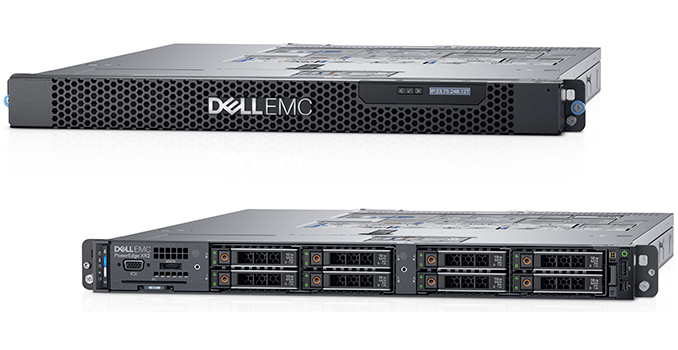
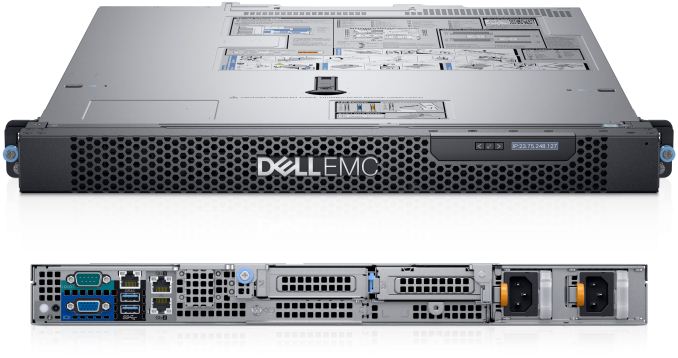


 Quote
Quote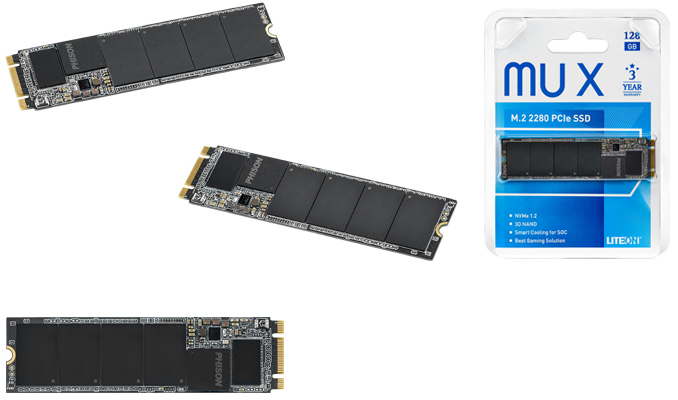

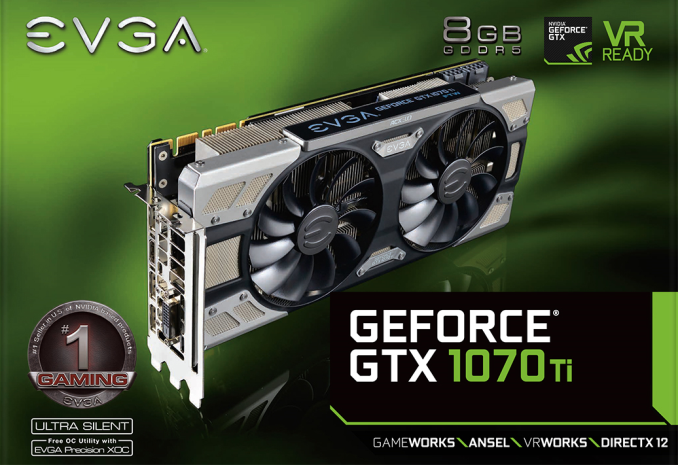
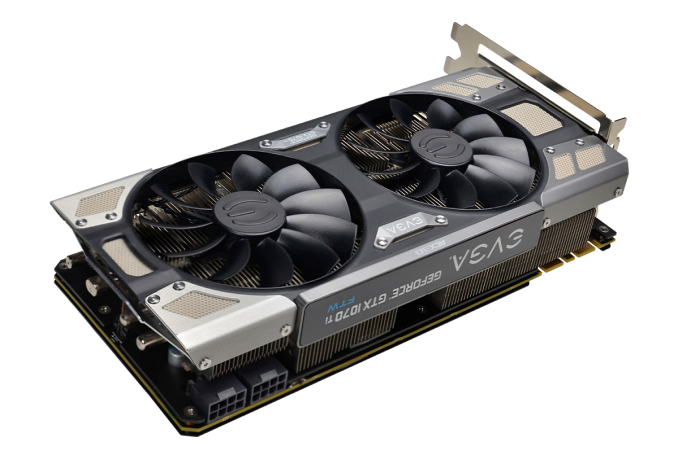
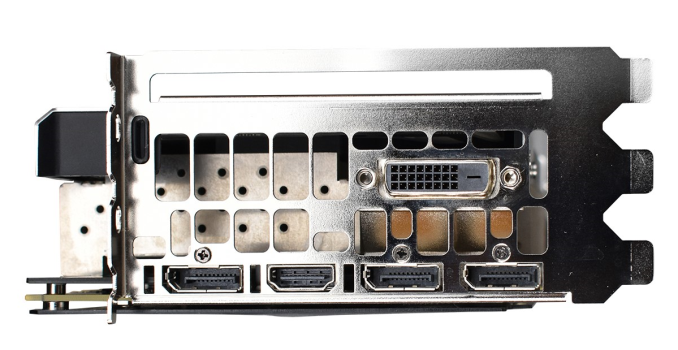
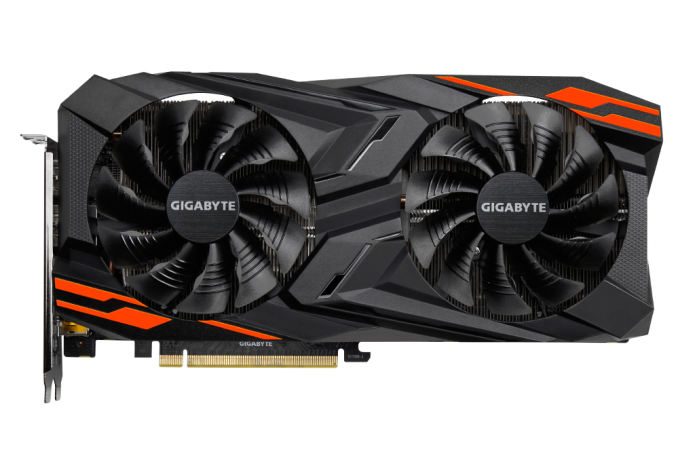
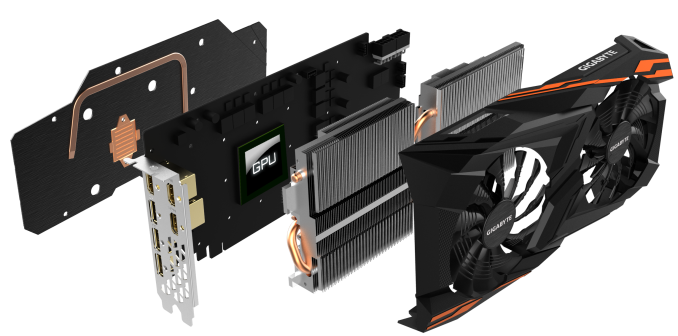
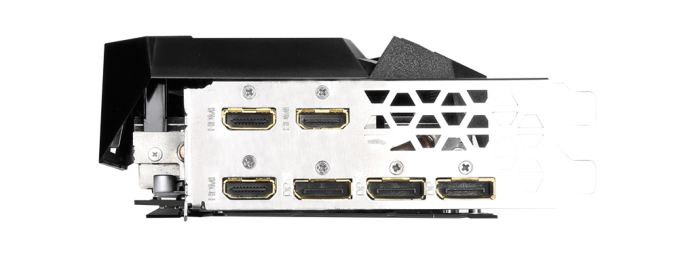


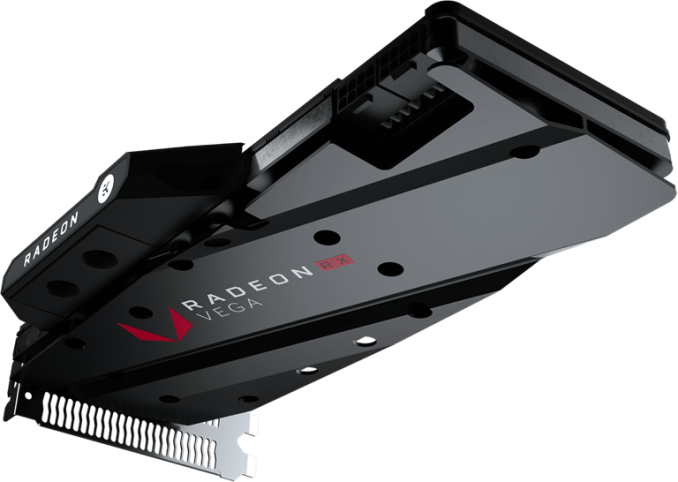
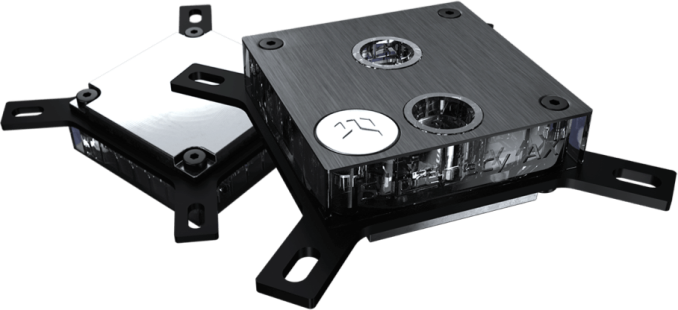
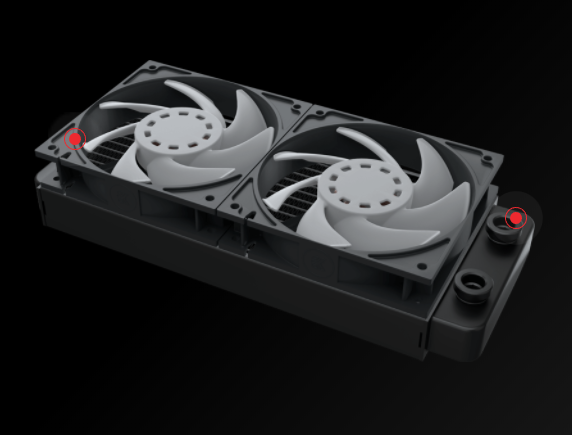
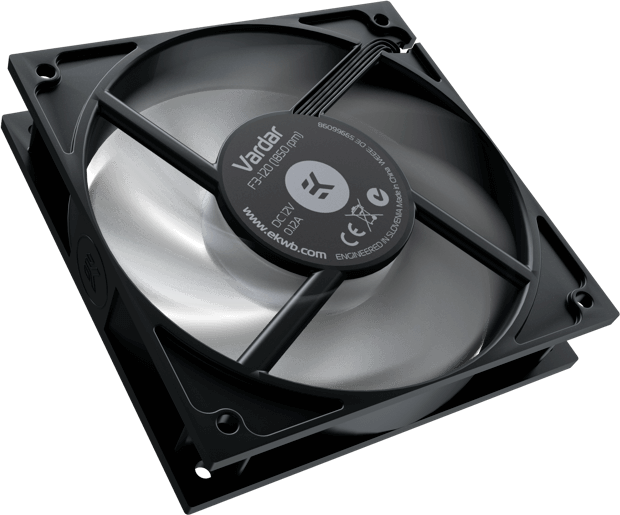
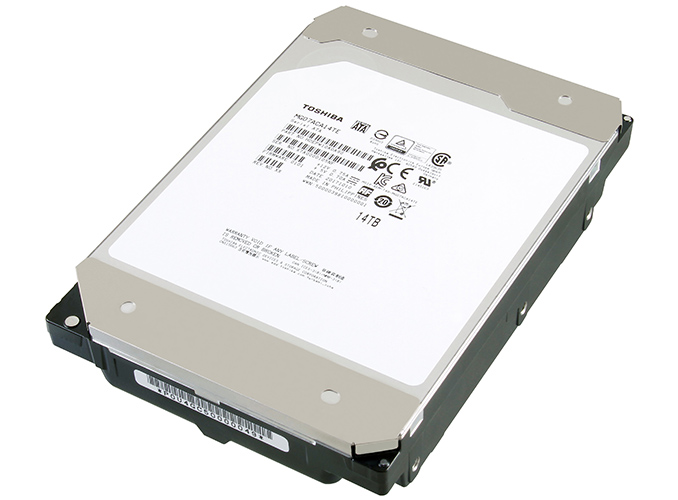


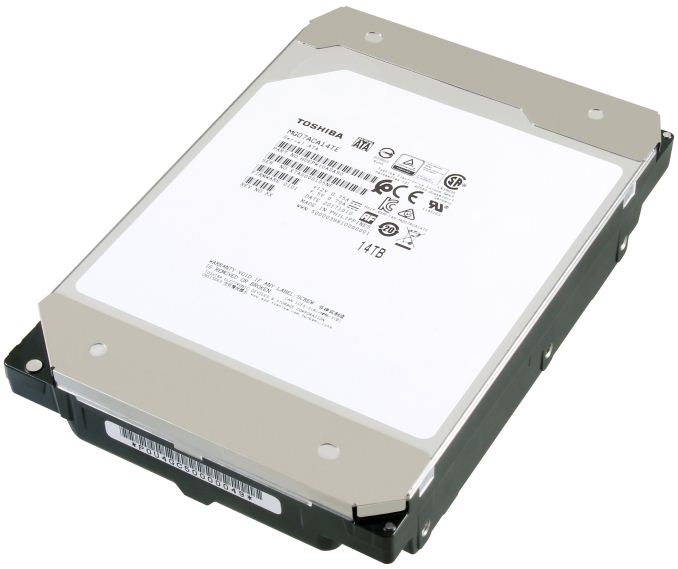
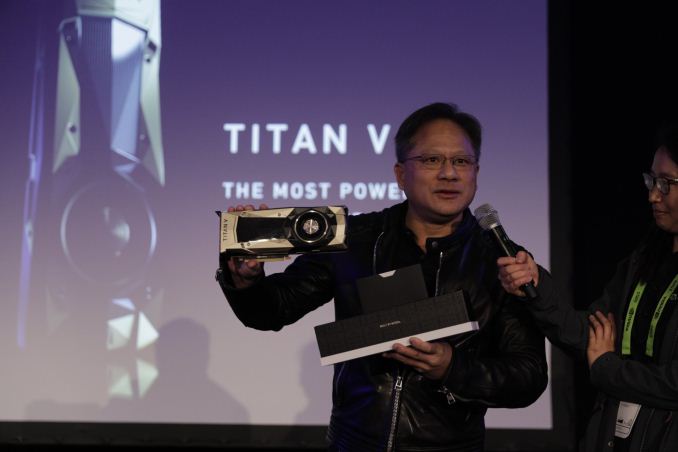
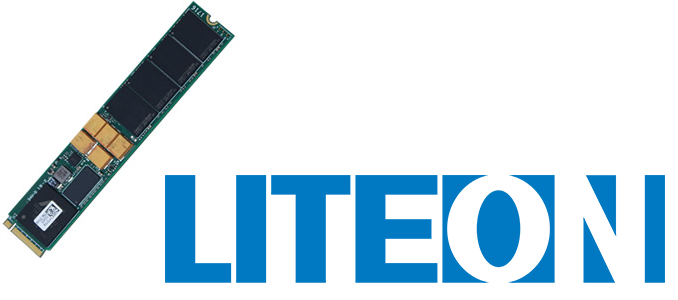
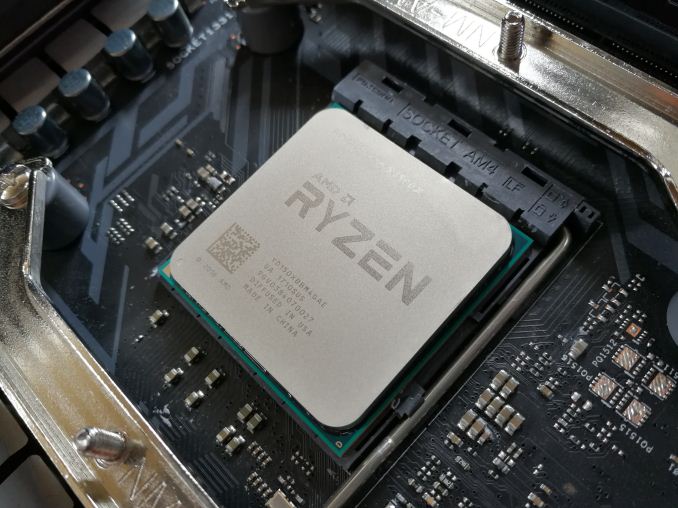
















Bookmarks